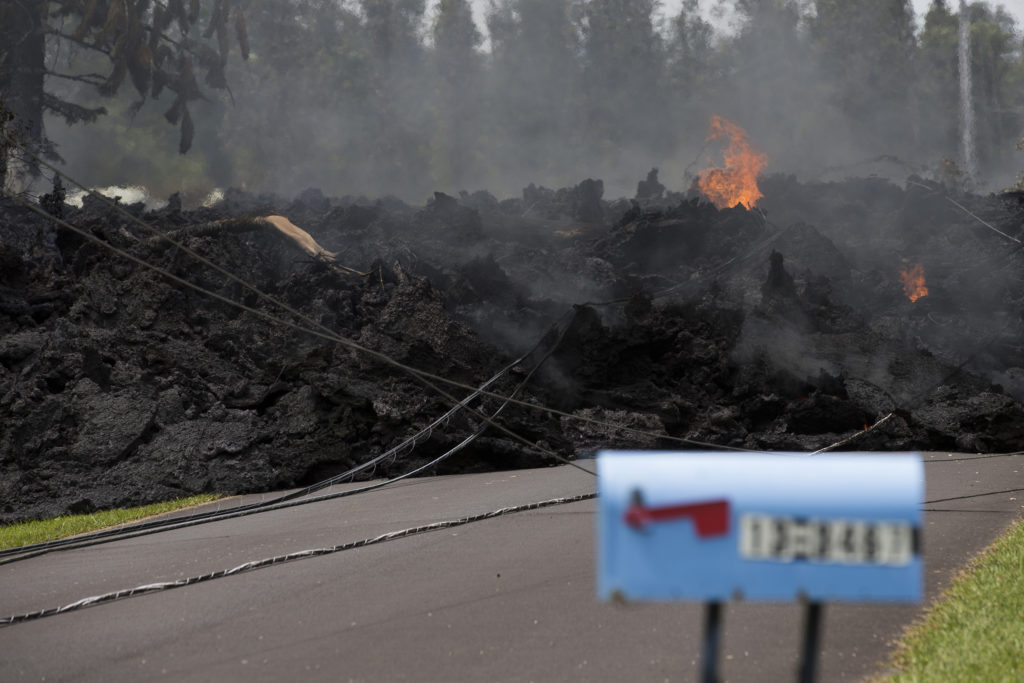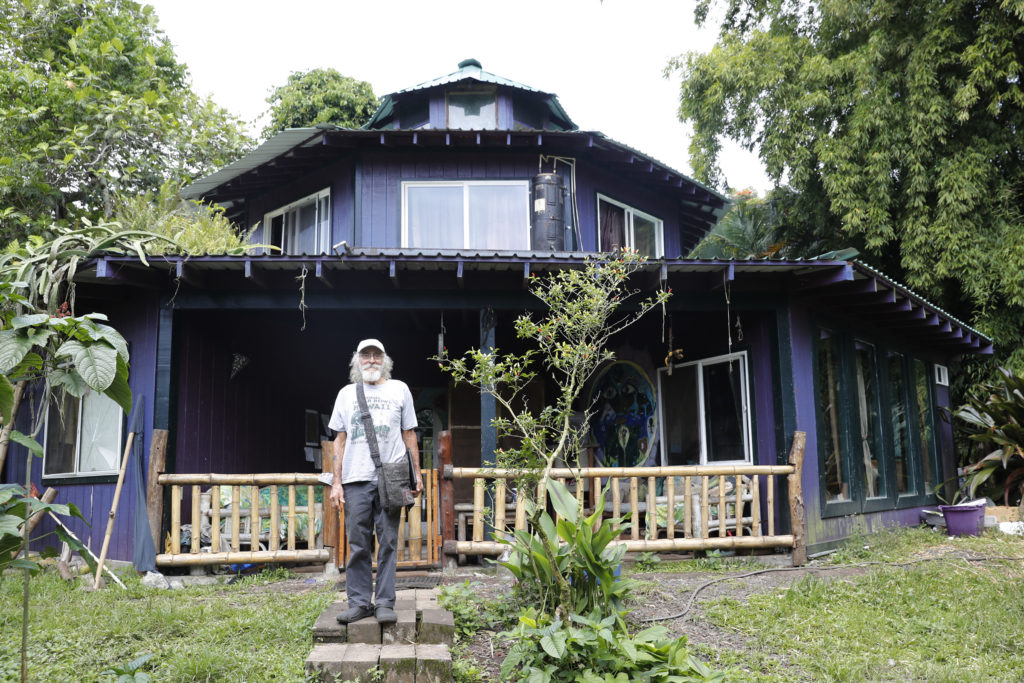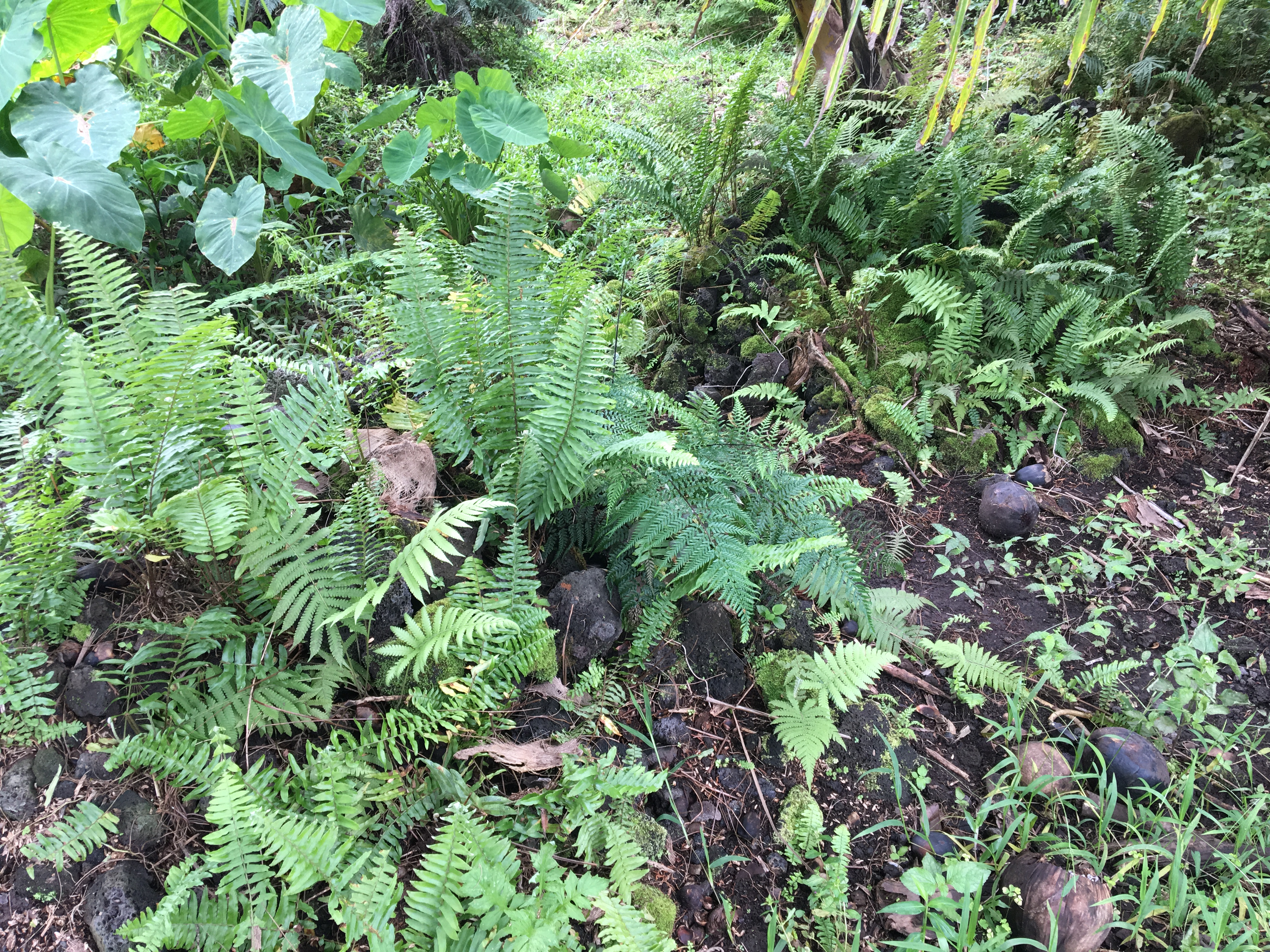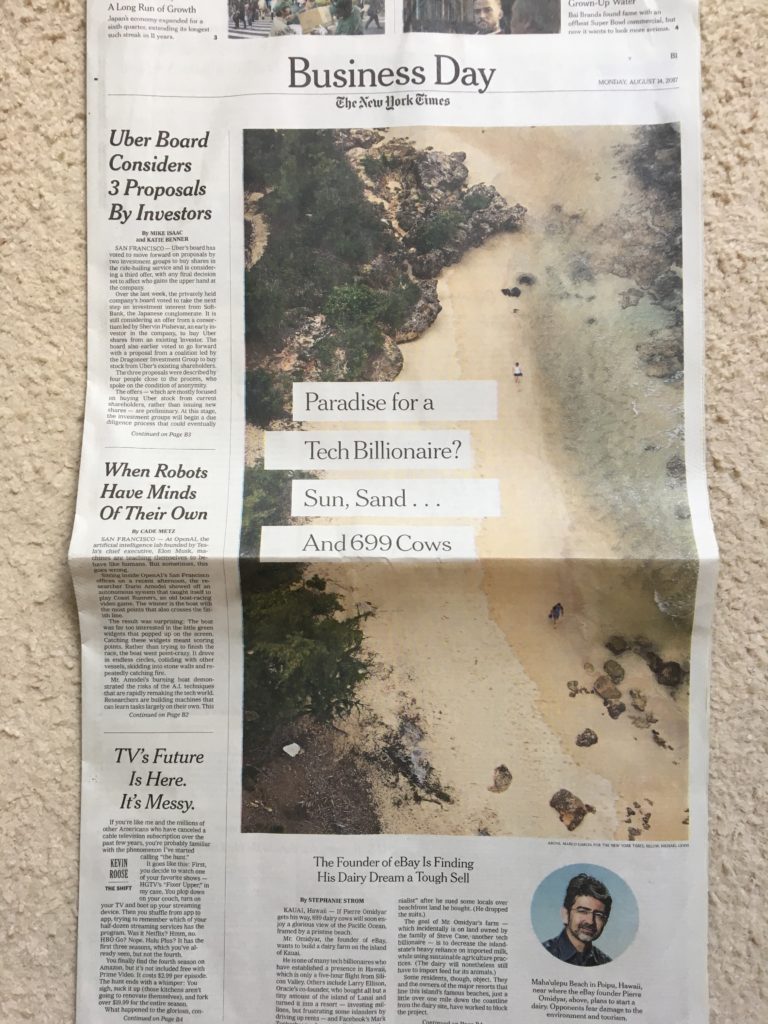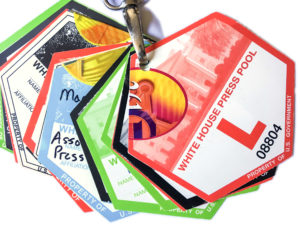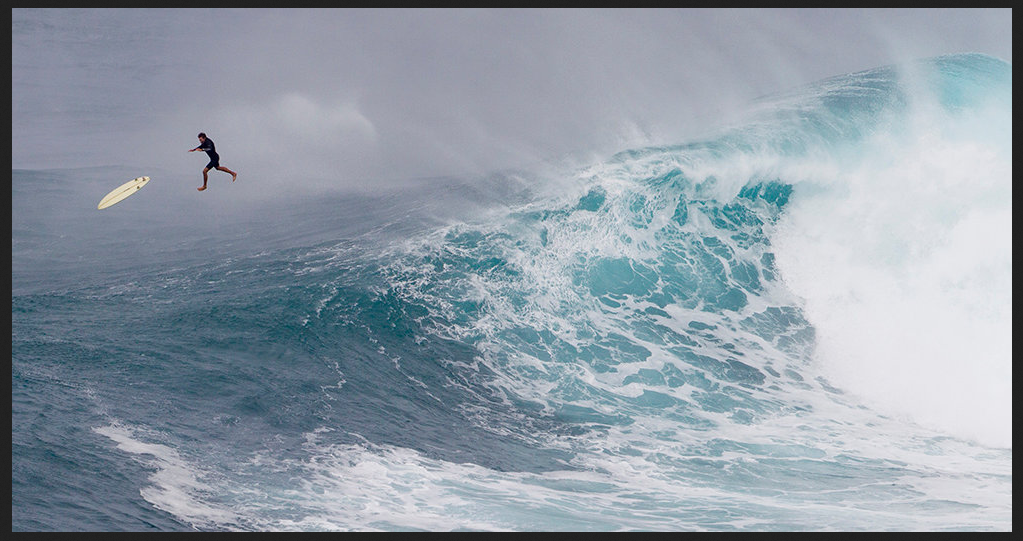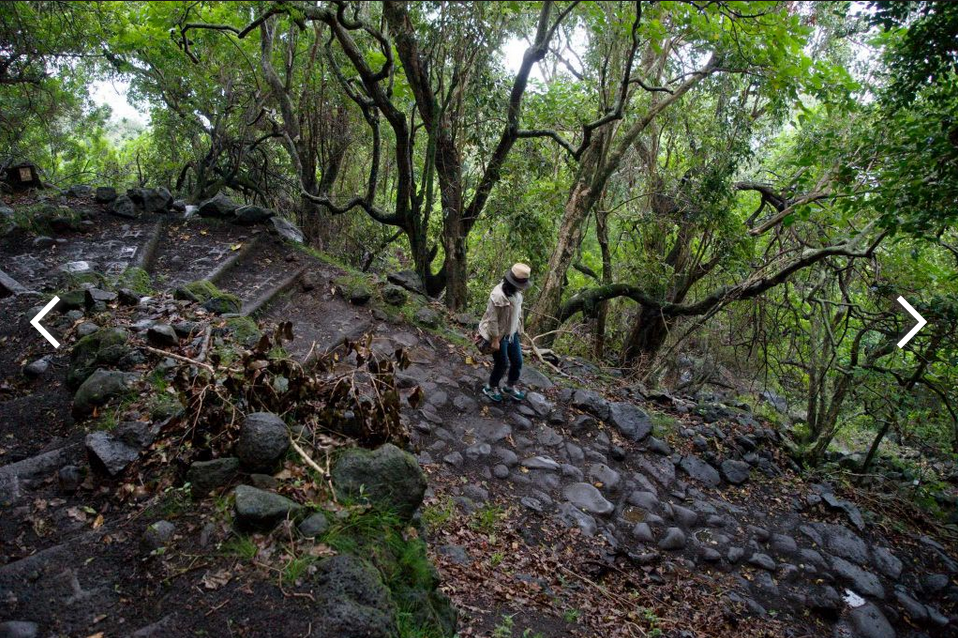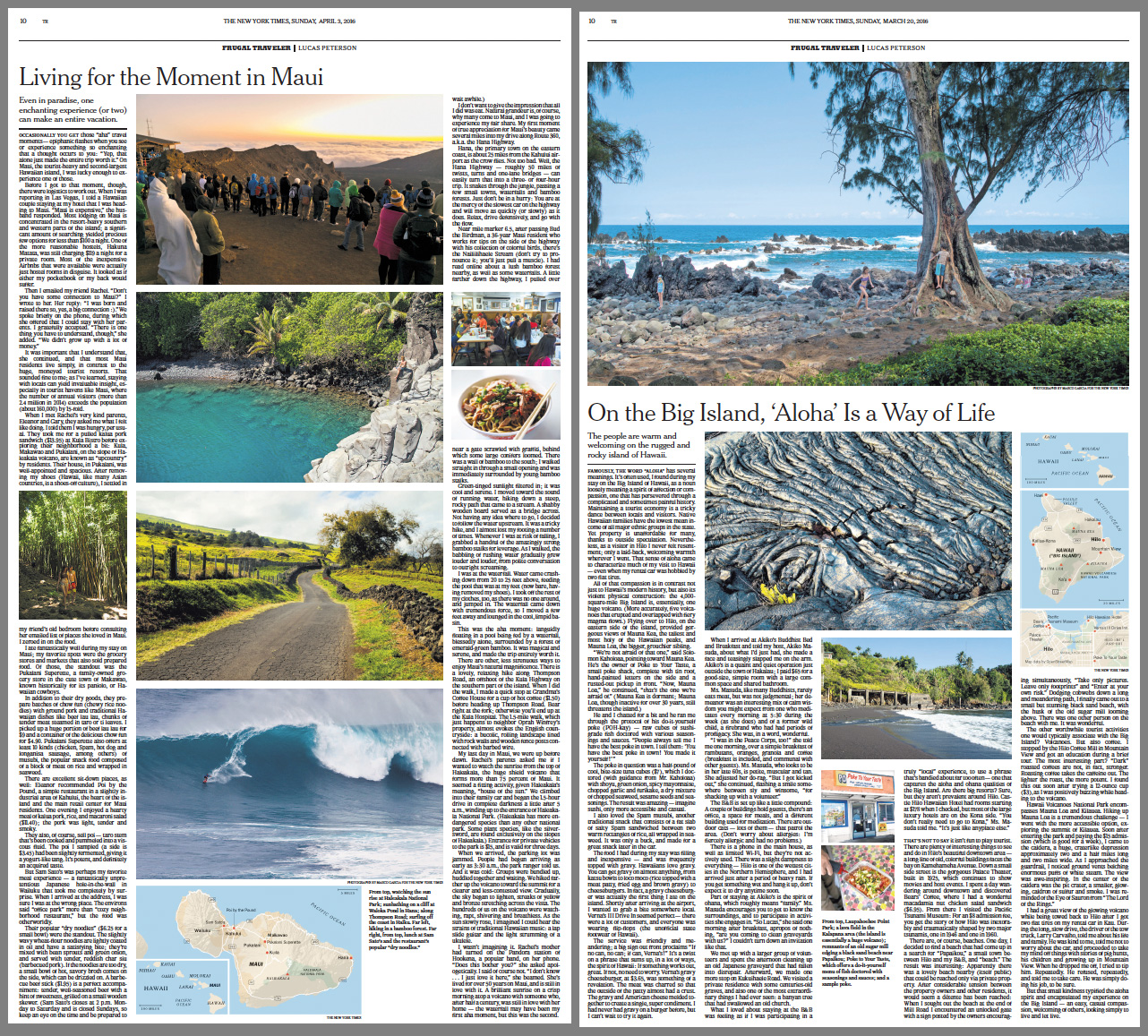
Our journey into Leilani Estates led us face to face with Madame Pele. Here is my continuing story about how we found the elusive lava that destroyed a beautiful community in Puna.
After we left Edwin’s farm and headed into Leilani Estates, we let Robert, another unforgettable character in this drama, lead us into the heart of the eruption.
Robert, who seemed to know everyone in Puna, appeared to live nowhere but lived everywhere around Puna. More urban intelligentsia than a hippie local living off-the-grid, he and his long, scraggly dreadlocks bounced with unmatched energy of a man itching to get somewhere or do something exciting.
We relied on Robert to get us into the evacuation zone, and after a few phone calls, he got permission from a guy who lived off Hinalo St. to allow us to cut across his property into Leilani Estates. We could not risk trespassing on private property but we also couldn’t risk driving on the open road as we had already gotten past a crucial roadblock.
The home sat on the edge of the Malama Ki forest reserve, and although I think it was mostly chutzpah, Robert claimed he knew the way through the forest and led us on a march in search of the the eruption.
Robert, who by then took off his shirt, hopped like a rabbit though the dense growth like a man on a mission. He led Caleb, the TV crew, and myself into heavy brush that reached far overhead. He followed no path but used his wild intuition to get us to the main road.
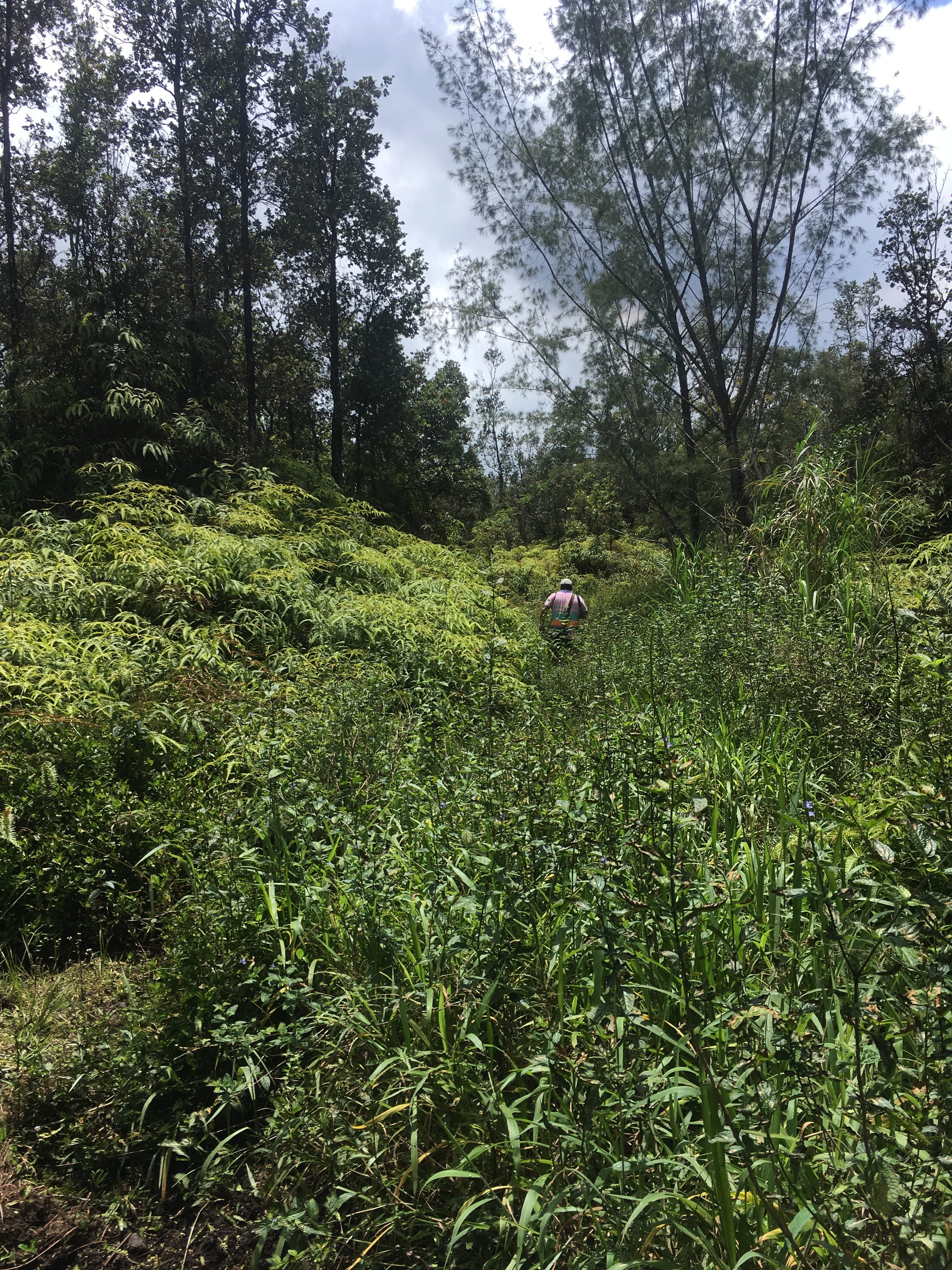
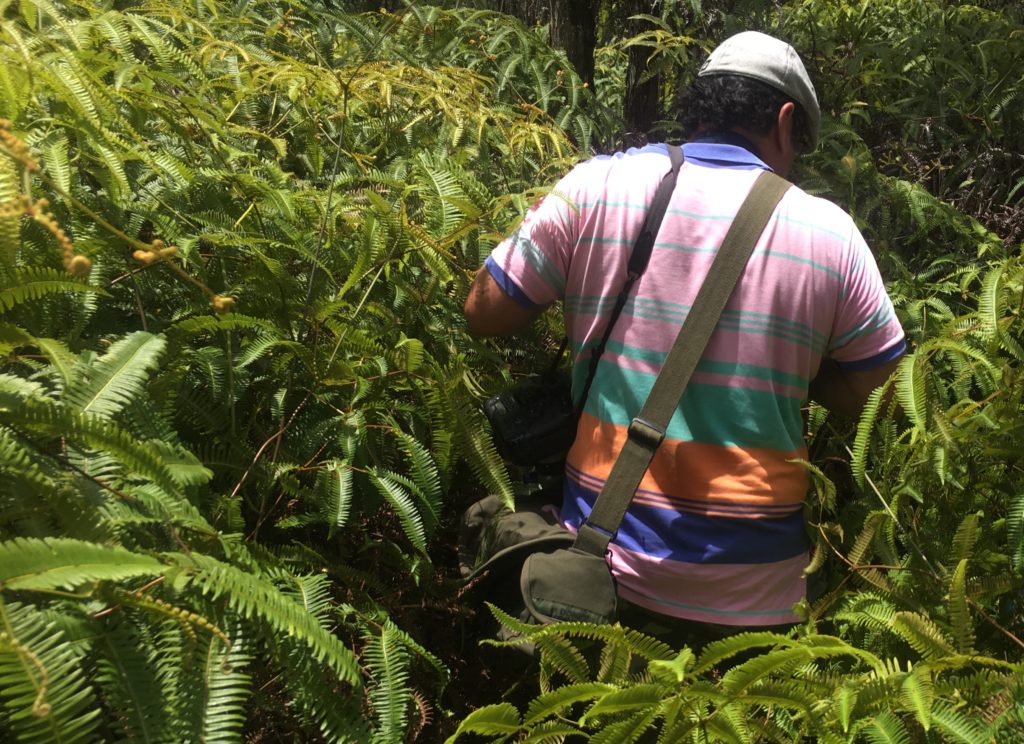
Caleb and I selfishly drained a bottle of water as the Puna sun beat down heavy on us as we trekked along in this wild adventure we would not forget for a very long time.
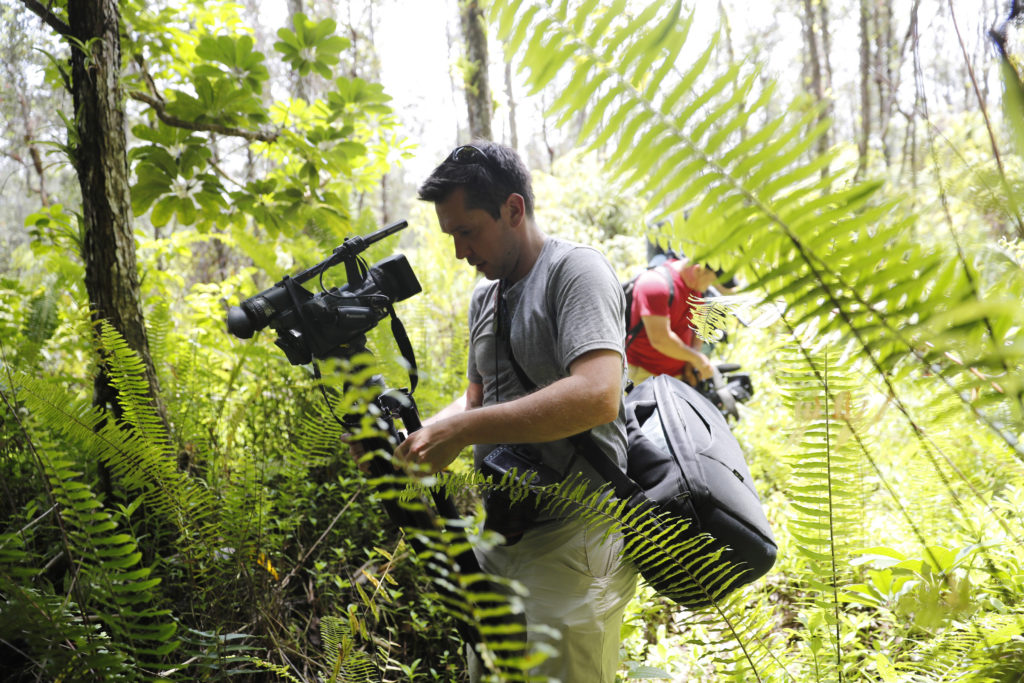
After doing a few turnarounds and managing to climb through what seemed to be a valley, we finally stumbled onto a clearing on an empty lot that sat directly on Leilani Ave. We quickly marched over to the street and began to walk down the road.
The beautiful neighborhood was eerily quiet as the mandatory evacuations cleared everyone out. Homes with towering palm trees and lush tropical gardens sat empty of their owners. The subdivision was a paradise and it was no wonder people risked living on a rift zone.
A helicopter buzzed low over our heads assessing the damage from the lava. I feared they were going to report us to the authorities and we’d be escorted out.I quickly began to trot ahead of our colorful group fearing the police were just around the bend. I was desperate to get lava and I wasn’t going to get caught this far into our adventure.
As we made a bend in the road, we found it. Lava covered the intersection of Leilani Ave at Makamae St. The lava spread across the road and spilled into several lots of land. It appeared to be more than ten feet high in some spots. The flow was incredibly massive. It was hard to see where it was coming from but we later figured it had come from fissures 2 and 7.
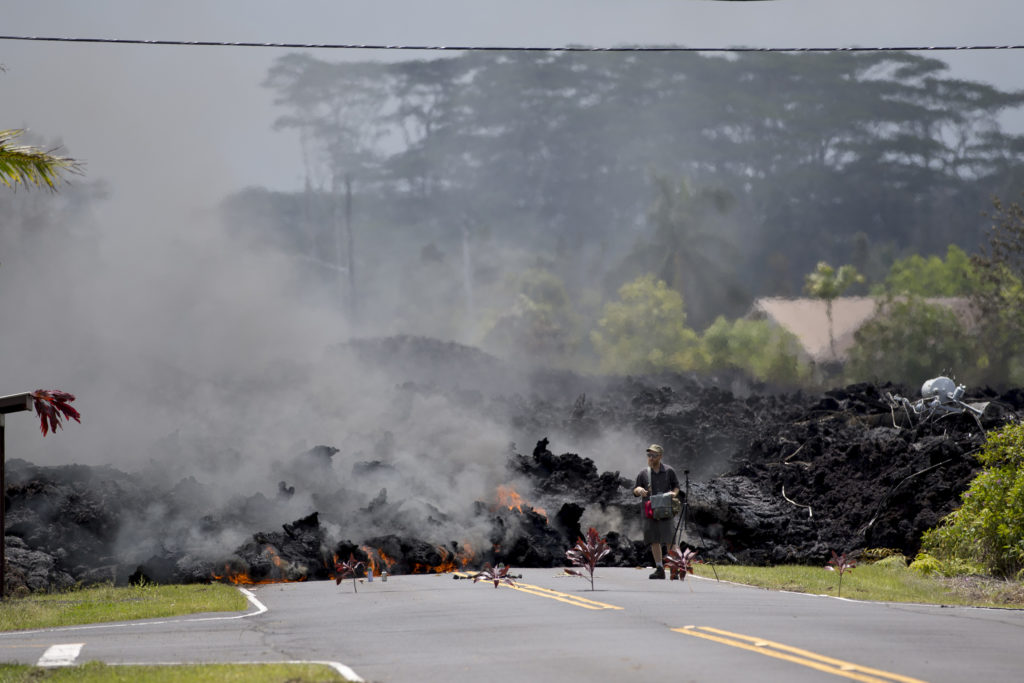
I ran at full speed to get to the flow as my anxiety took over my emotions. I had put a load of pressure on myself to get this shot as it was a big story. Lava erupting in the middle of a neighborhood is not an everyday event.
I photographed the scene while the TV crew made their report and Caleb interviewed a few residents who lingered around the site. As I framed my shots, I found it difficult to illustrate how much lava was actually in front of us. It stretched all around us and it seemingly built up over a few hours. It was just incredible.
While lava is extremely dangerous, most lava flows in Hawaii move relatively slow and, other than having to avoid toxic gases, we were able to walk up to it with little danger to ourselves. Caleb put his video camera on the ground in front of the lava and let it run with little fear it would be swallowed by the flow.
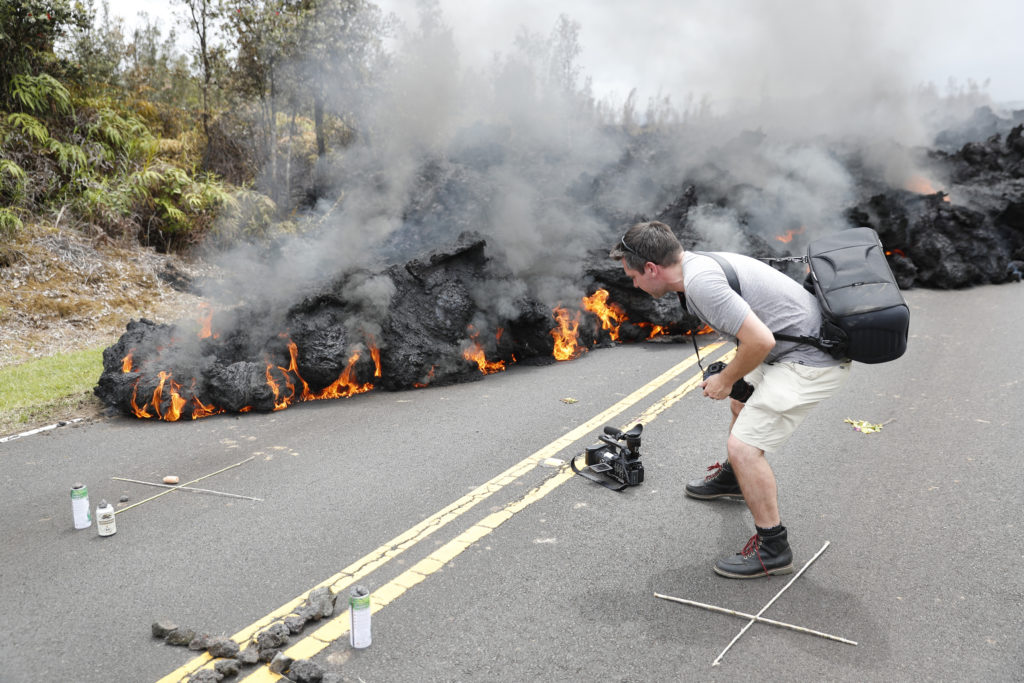
The flow tore down telephone poles leaving down power scattered across the road. Smoke from a burning structure rose in the distance. Acrid smoke also rose from the burning asphalt covered by the hot magma. The paradise I had know a few blocks away would change forever as nothing was going to stop the lava.
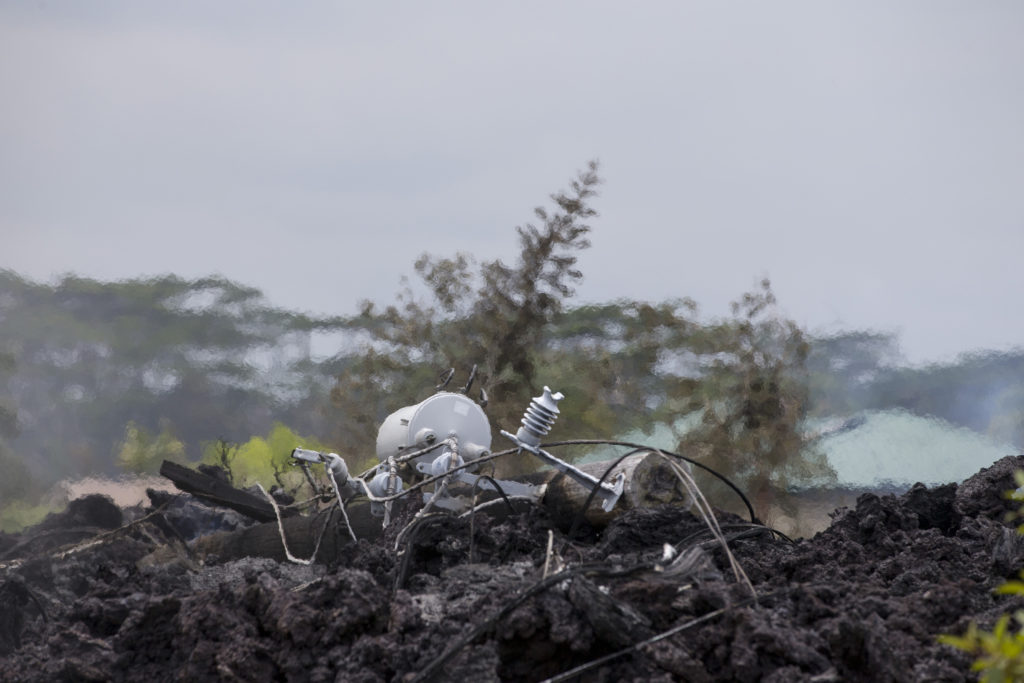
The lava we found at the intersection of Makamae St and Leilani Ave was just the beginning. The amount of lava that flowed out within the two days of the eruption was horrifying. As time went on, the entire region we hiked on including parts of Edwin’s farm, was completely covered by the lava flow. Some areas in the lava zone were reported to have over 30 feet or more of lava built up. What we thought was massive was just the beginning.
